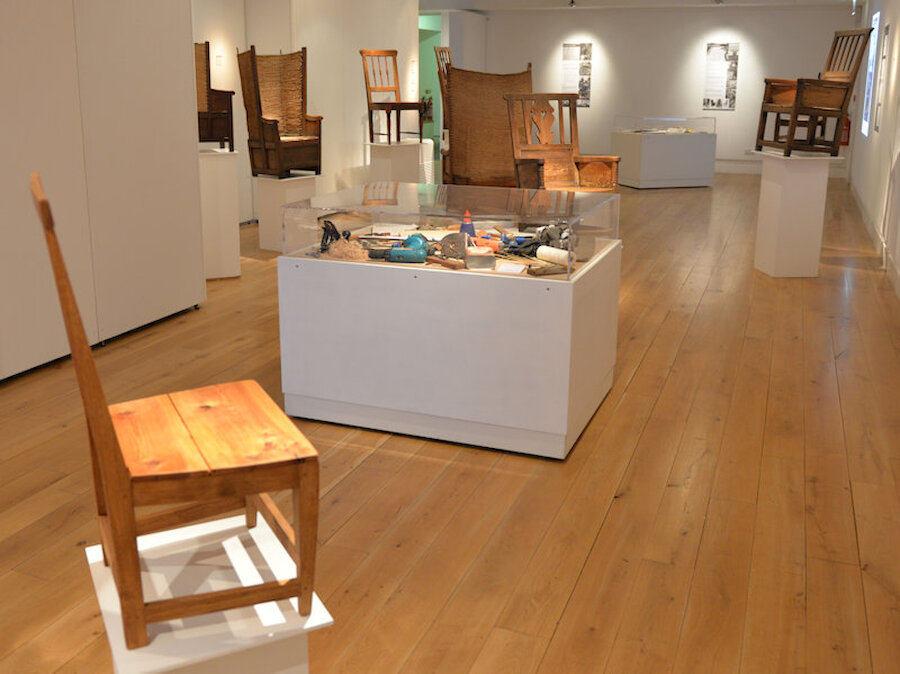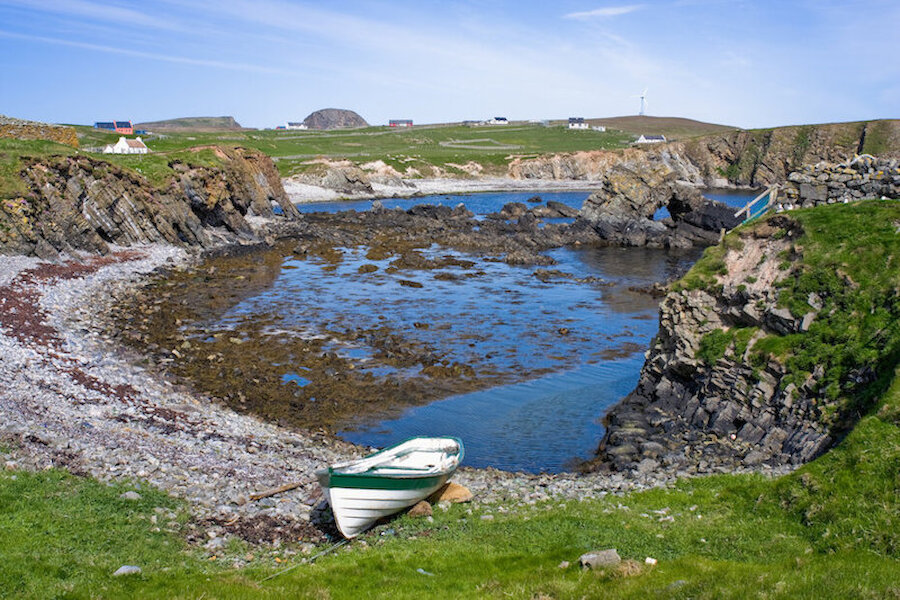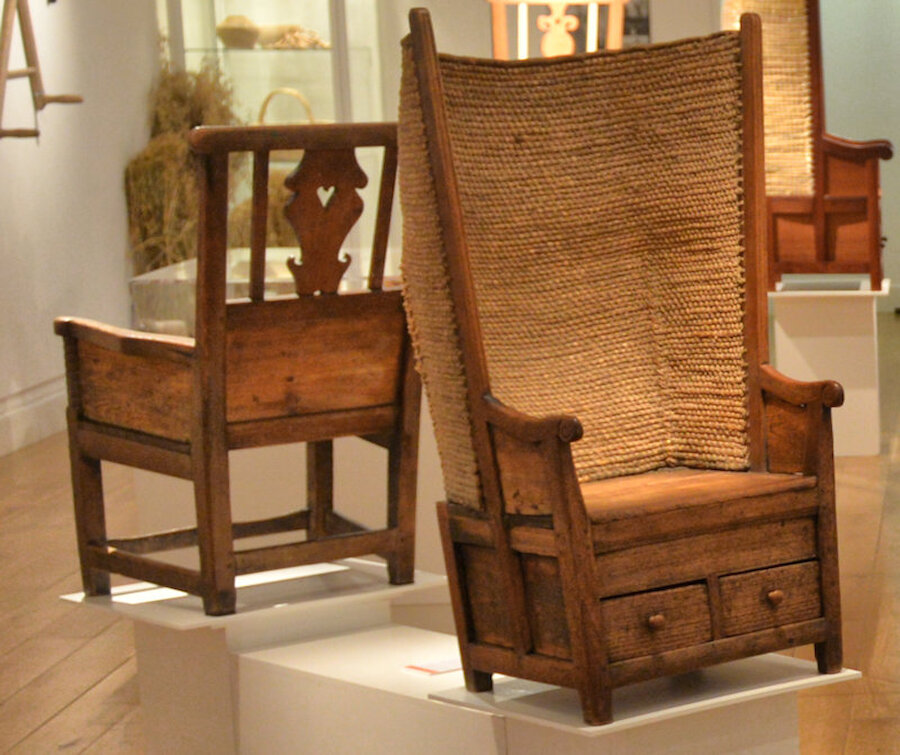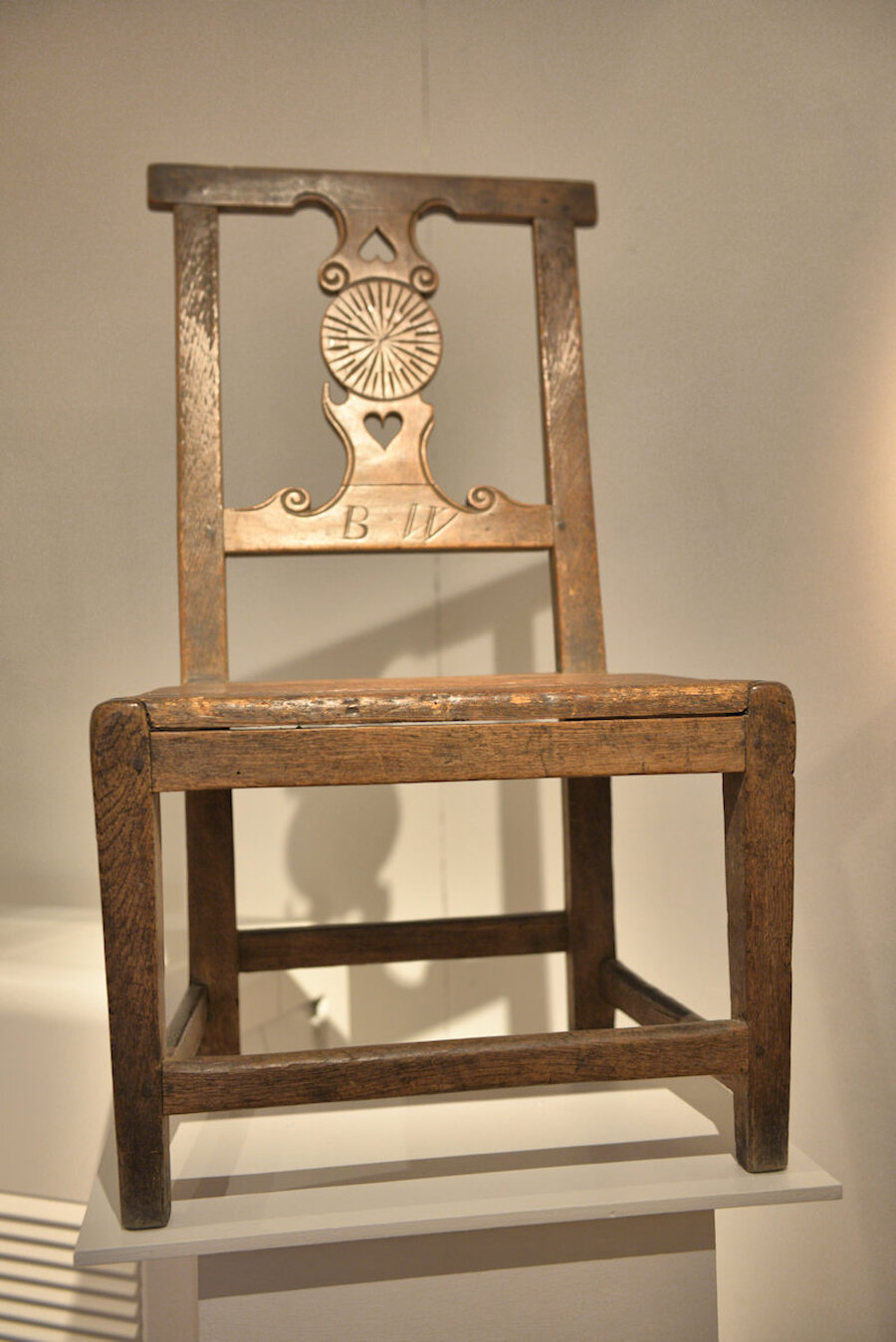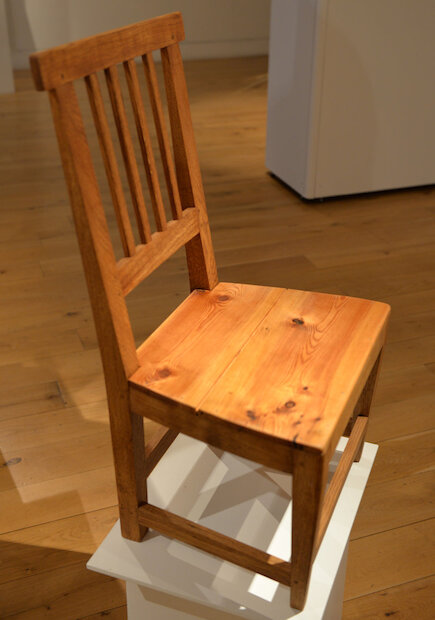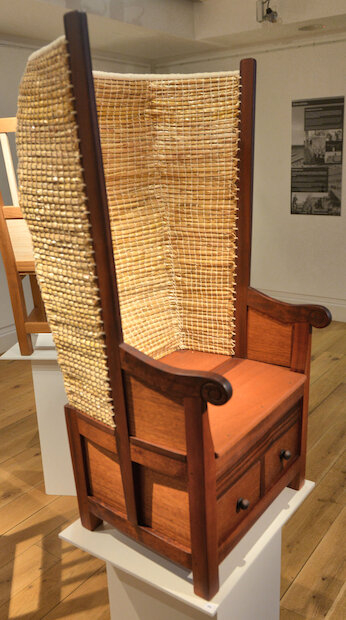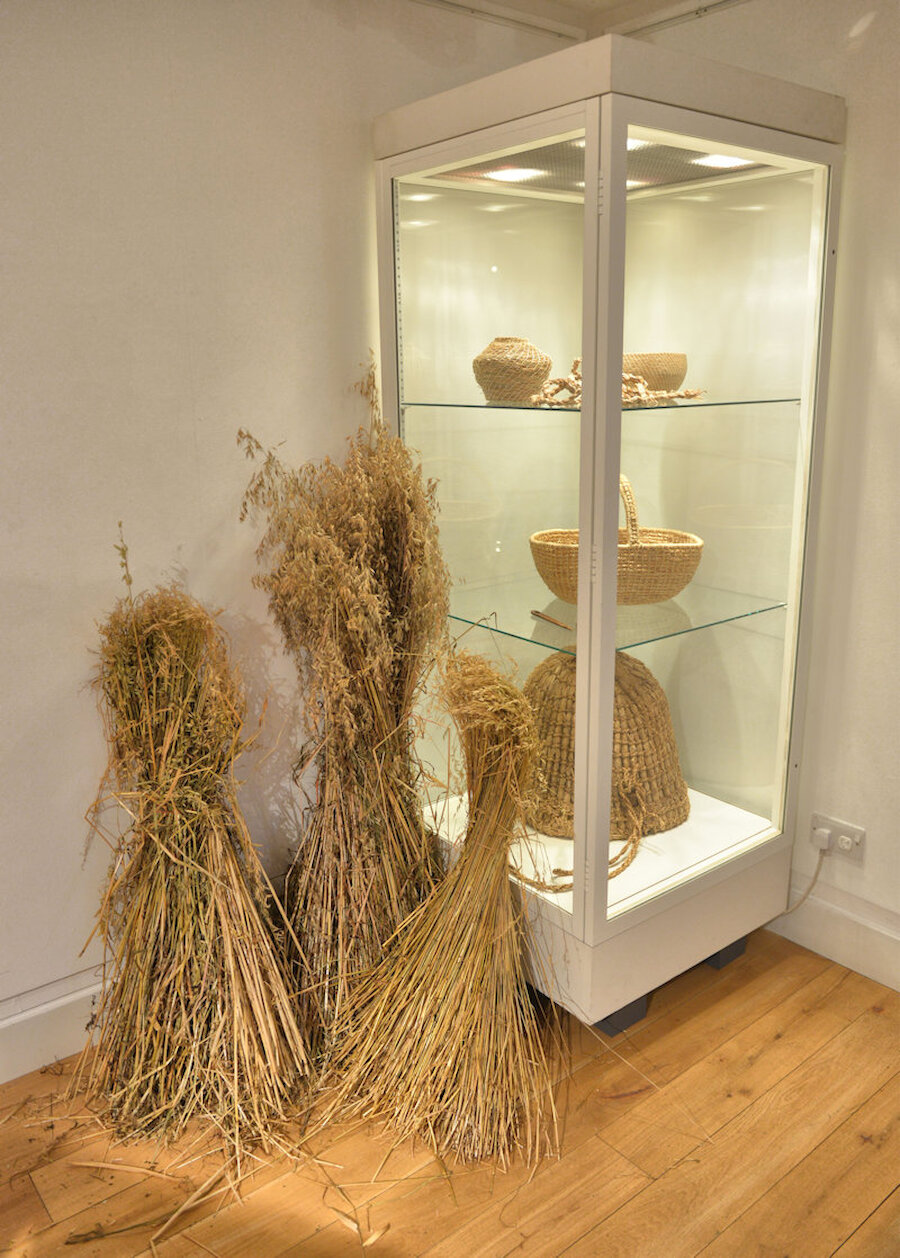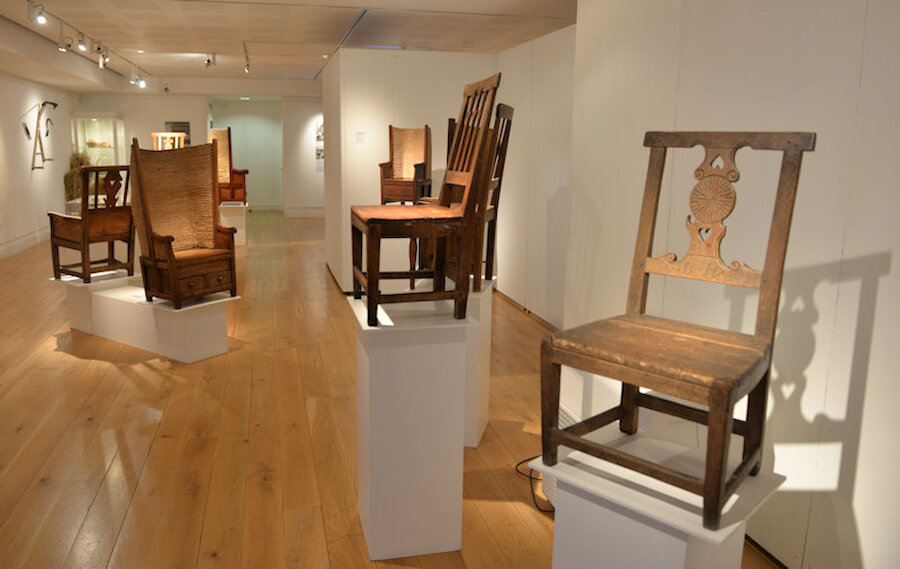Fair Isle lies about midway between the southern tip of Shetland and the northernmost island in Orkney, North Ronaldsay. The remotest island in the UK, it’s administratively part of Shetland, and if you want to travel there, the usual route is by either flight from Tingwall Airport near Lerwick or ferry from Grutness, close to Sumburgh Airport.
Thanks to the work of artist and maker Eve Eunson, the craft of Fair Isle chair making has been properly recorded and may now have a brighter future.
Thanks to its isolation and its particular traditions – including, of course, Fair Isle knitting – it has a unique identity. It’s also known for its bird life, including many rarities seen during spring and autumn migrations. There has been a bird observatory on the island since 1948; a new one will be constructed shortly to replace one destroyed by fire. The island has been owned since 1954 by the National Trust for Scotland.
Eve Eunson grew up on the family croft in Fair isle and later studied architecture in Aberdeen. After working as an architectural assistant and graphic designer, she made the bold decision to give up a conventional career. Since 2018, she’s been working on a project that has allowed her to study furniture and basketry, with the focus very much on those traditions in Fair Isle, Shetland and Orkney. The results are currently on show in the Shetland Museum, where visitors can see examples of traditional chairs, including Eve’s own work.
Eve had become fascinated by the Fair Isle chair tradition and – despite having little knowledge of vernacular furniture or woodworking – she threw herself into the project. She did, though, have skills in surveying and drawing, and Fair isle and its heritage were of course close to her heart. There were strong family connections, too: the pair of chairs above were made in around 1886 for the marriage of her great great grandmother and great great grandfather.
She began by taking stock of the range of Fair isle chairs, seeking out examples not only in the island but also in Shetland, Orkney, the Highlands and Edinburgh. Sometimes, chairs left the island with their owners when they emigrated. She managed to track down and record 91 chairs, completing surveys on 74 of them. Her detective work included searching through family photographs and one child’s strawback chair turned up on an auction site in America. Each chair was measured and drawn; however, dating some of them proved impossible.
Eve has identified three basic forms, side chairs, armchairs and strawback chairs. Strawback chairs are usually associated with Orkney but, rather as Fair Isle has its own subspecies of wren, it turns out that the Fair Isle strawback ones display subtle differences in their construction. The one above, from Stoneybrek in Fair Isle, incorporates strengthening in the form of corner dowels that are unique to Fair Isle.
Eve has established that the technique used in Fair Isle differs from that employed elsewhere in that the straw was generally knotted rather than stitched, making the Fair isle chair backs unique. Indeed, the stitched examples she found may have been replacements for earlier knotting. The framing in Fair Isle was different, too.
Her research also explored the history of Fair Isle, and she notes that shipwrecks were not only a frequent feature of island life but also provided the timber for chair-making.
The chairs often include carved details, with certain motifs common, including hearts, compass and scrolls. These are present in the example above, and this one also bears initials, the letters BW; it has been suggested that the timber came from the wreck of the Black Watch and was repurposed for Barbara Wilson.
Some makers incorporated components turned on lathes, like the one above. Eve points out that this example had other features created by a skilled maker, including octagonal shaping of the back legs and chamfering around the rails.
Chairs were sometimes made for children. The example below is a rare child’s strawback chair, made around 1926 by Jeremiah Eunson, Eve’s great grandfather, for a family friend. Eve located another example across the Atlantic in North Carolina.
Having assembled a wealth of information, Eve then set about the next part of the project, which involved making examples of the chairs. She visited established furniture makers in both Shetland and Orkney in order to learn the craft, returning to Fair Isle in early 2020 to make the most challenging of the designs, the strawback. Eve’s chairs are shown below, along with some of the tools she used.
All of this work has now come together in the Shetland Museum’s exhibition. It features a range of traditional Fair Isle chairs, some from the museum’s own collections and some on loan, alongside these three that Eve has so beautifully hand-crafted herself.
The project and the exhibition also highlight other uses for the Shetland oat straw in basketmaking particularly. These oats (known as aets, avena strigosa) are grown only in small quantities nowadays, where once they were a main crop.
What of the future? It would be good to see more attention paid to these craft skills and to the resources – including the oats – on which they depend. Certainly, the focus on local production for local needs fits well with current thinking on sustainability. The retention of both the skills and the items produced adds interest and diversity in a world dominated by mass production. That lends great value to projects like Eve’s and it’s to be hoped that she succeeds in her aspiration to expand her skills and produce more furniture and basketry.

